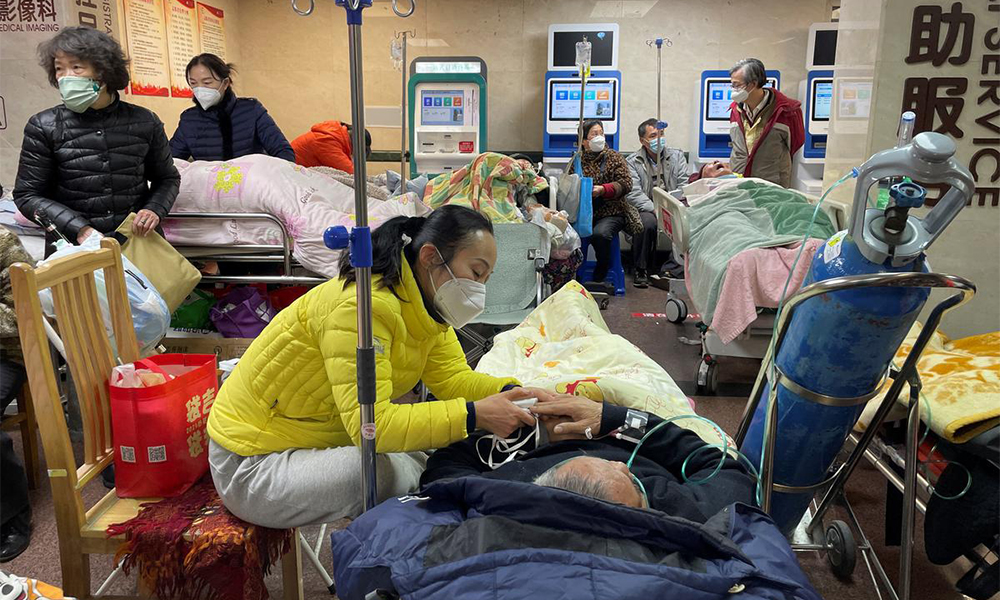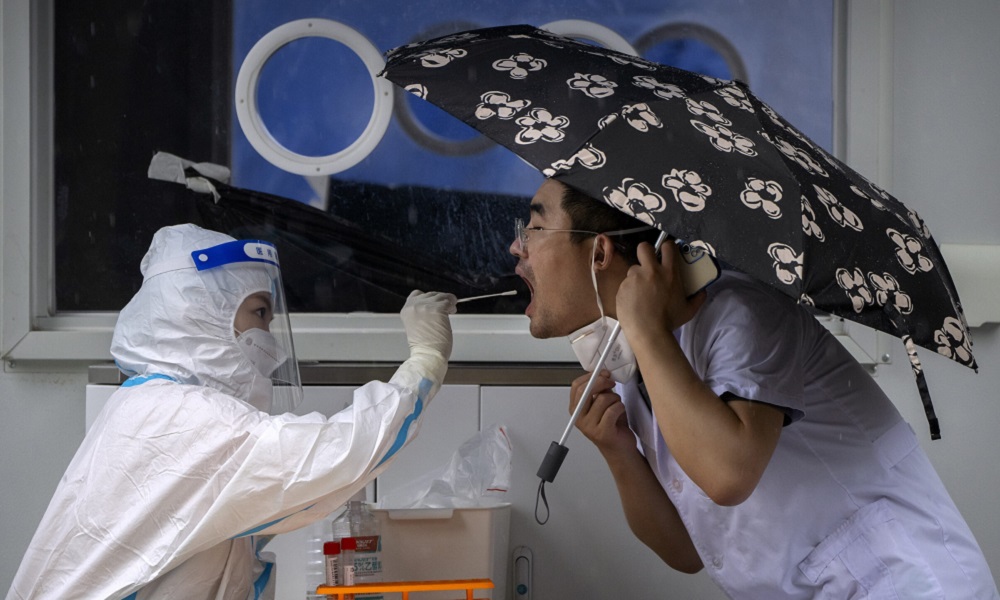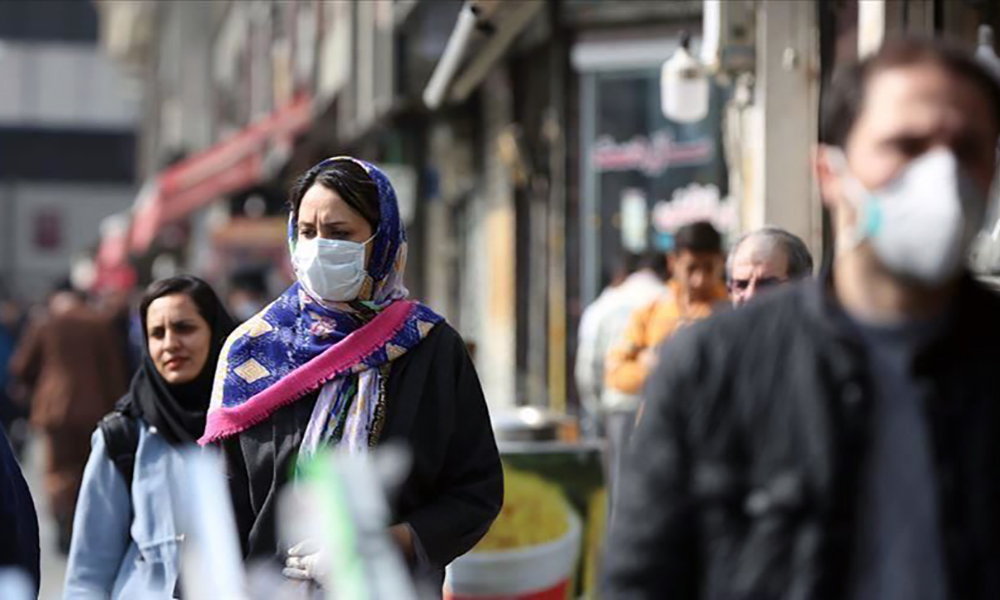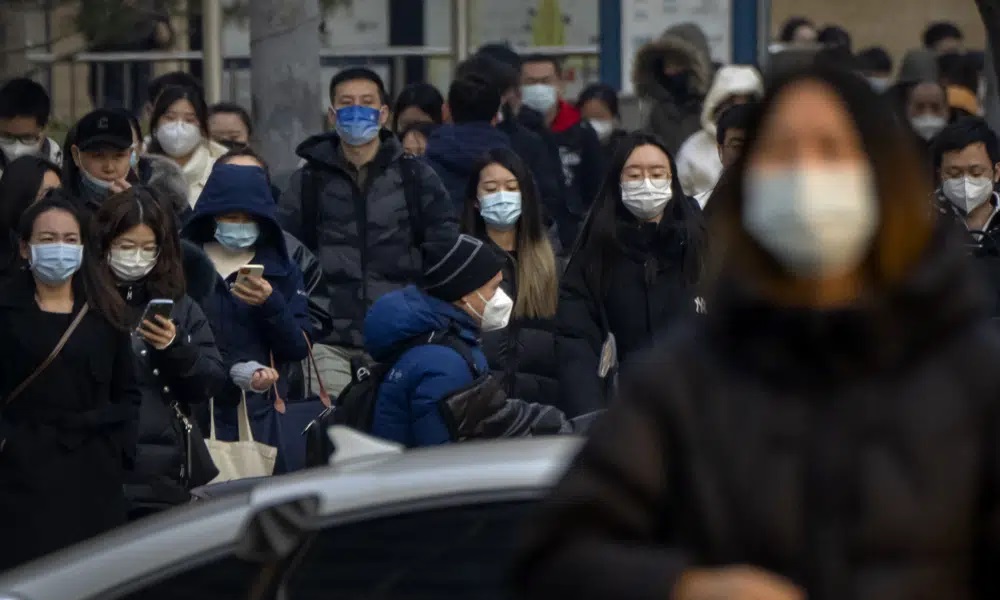COVID-19
WHO says China data underrepresents COVID surge and deaths

China’s COVID-19 data is not giving an accurate picture of the situation there and underrepresents the number of hospitalisations and deaths from the disease, Reuters quoting a senior official at the World Health Organization said on Wednesday.
The U.N. agency was preparing to meet Chinese scientists again on Thursday as part of a wider briefing among member states on the global COVID-19 situation as concerns grow about the rapid spread of the virus in the world’s No. 2 economy.
On Tuesday, China’s top scientists presented data to a WHO technical advisory group showing no new coronavirus variant had been found in the country of 1.4 billion people, read the report.
That might ease some concerns about the outbreak since Beijing abruptly reversed its “zero COVID” policy last month.
But comments by WHO officials on Wednesday were the clearest criticism yet of China’s recent handling of the pandemic. It underscored worries about the accuracy and availability of Beijing’s data, hampering the fight against the disease which has killed more than 6.7 million and roiled global economies.
“We believe the current numbers being published from China underrepresent the true impact of the disease in terms of hospital admissions, in terms of ICU admissions, particularly in terms of death,” said Mike Ryan, WHO’s emergencies director.
He told a briefing in Geneva that the WHO believes the Chinese government’s definition for death is “too narrow”.
“We still do not have complete data,” said Ryan.
Late last month, the world’s most populous country narrowed its definition for classifying deaths as COVID-related, counting only those involving COVID-caused pneumonia or respiratory failure, raising eyebrows among world health experts, Reuters reported.
The WHO says deaths should be attributed to COVID-19 if they result from a “clinically compatible illness” in a patient with a probable or confirmed infection, and no other unrelated cause of death – like trauma – is involved.
China has reported five or fewer deaths a day since the policy U-turn. But many Chinese funeral homes and hospitals say they are overwhelmed, and international health experts predict at least 1 million COVID-related deaths in China this year without urgent action.
Abdi Rahman Mahamud, director of the WHO’s alert and response coordination department, cautioned there may be another wave of infections as families gather for China’s Lunar New Year holiday in a few weeks – one of its busiest travel periods, read the report.
He said vaccination rates needed to increase and people should wear masks to protect themselves from infection.
But the WHO said there is “no inevitability” in terms of predictions of large numbers of deaths.
“It really does depend on the measures that are in place,” said the WHO’s COVID-19 technical lead Maria van Kerkhove.
She said the WHO was working with China to improve access to life-saving tools and cope with health workforce issues in badly-hit areas.
Earlier in the briefing, WHO Director-General Tedros Adhanom Ghebreyesus reiterated that the agency is “concerned” about the surge in COVID-19 infections in China and again urged Beijing to deliver rapid and regular data on hospitalisation and death there as well as real-time viral sequencing.
“WHO is concerned about the risk to life in China and has reiterated the importance of vaccination, including booster doses to protect against hospitalisation, severe disease and death,” Tedros said.
With viral circulation in China so high and comprehensive data not forthcoming, he said it is understandable that some countries are taking steps like testing travellers arriving from the country to protect their own citizens, Reuters reported.
COVID-19
WHO declares end to COVID global health emergency

The World Health Organization said Friday that COVID-19 no longer qualifies as a global emergency, marking a symbolic end to the devastating coronavirus pandemic that triggered once-unthinkable lockdowns, upended economies and killed millions of people worldwide.
The announcement, made more than three years after WHO declared the coronavirus an international crisis, offers some relief, if not an ending, to a pandemic that stirred fear and suspicion, hand-wringing and finger-pointing across the globe, AP reported.
The U.N. health agency’s officials said that even though the emergency phase was over, the pandemic hasn’t finished, noting recent spikes in cases in Southeast Asia and the Middle East.
WHO says thousands of people are still dying from the virus every week, and millions of others are suffering from debilitating, long-term effects.
“It’s with great hope that I declare COVID-19 over as a global health emergency,” WHO Director-General Tedros Adhanom Ghebreyesus said.
“That does not mean COVID-19 is over as a global health threat,” he said, warning that new variants could yet emerge. Tedros noted that while the official COVID-19 death toll was 7 million, the real figure was estimated to be at least 20 million.
Tedros said the pandemic had been on a downward trend for more than a year, acknowledging that most countries have already returned to life before COVID-19.
He bemoaned the damage that COVID-19 had done to the global community, saying the pandemic had shattered businesses, exacerbated political divisions, led to the spread of misinformation and plunged millions into poverty.
When the U.N. health agency first declared the coronavirus to be an international crisis on Jan. 30, 2020, it hadn’t yet been named COVID-19 and there were no major outbreaks beyond China.
More than three years later, the virus has caused an estimated 764 million cases globally and about 5 billion people have received at least one dose of vaccine.
In the U.S., the public health emergency declaration made regarding COVID-19 is set to expire on May 11, when wide-ranging measures to support the pandemic response, including vaccine mandates, will end. Many other countries, including Germany, France and Britain, dropped most of their provisions against the pandemic last year.
When Tedros declared COVID-19 to be an emergency in 2020, he said his greatest fear was the virus’ potential to spread in countries with weak health systems.
Most recently, WHO has struggled to investigate the origins of the coronavirus, a challenging scientific endeavor that has also become politically fraught.
COVID-19
COVID-19 in Iran: Nearly 900 new cases, 24 deaths recorded

The Iranian health ministry announced on Sunday that more than 890 new cases of COVID-19 have been identified across the country during the past 24 hours, adding that 24 patients have died in the same period of time, Fars News Agency reported.
“A sum of 891 new patients infected with COVID-19 have been identified in the country based on confirmed diagnosis criteria during the past 24 hours,” the Iranian Health Ministry’s Public Relations Center said on Sunday, adding, “454 patients have been hospitalized during the same time span.”
The ministry’s public relations center said 611 people infected with COVID-19 are in critical condition.
COVID-19
China says 200 million treated, pandemic ‘decisively’ beaten

China says more than 200 million of its citizens have been diagnosed and treated for COVID-19 since it lifted strict containment measures beginning in November.
With 800,000 of the most critically ill patients having recovered, China has “decisively beaten” the pandemic, according to notes from a meeting of the ruling Communist Party’s all-powerful Politburo Standing Committee presided over by President and party leader Xi Jinping, AP reported.
China enforced some of the world’s most draconian lockdowns, quarantines and travel restrictions and still faces questions about the origins of the virus that was first detected in the central Chinese city of Wuhan in late 2019. Heavy-handed enforcement prompted rare anti-government protests and took a heavy toll on the world’s second-largest economy.
The official Xinhua News Agency quoted Xi as saying that policies to control the outbreak had been “entirely correct.” The abrupt lifting in November and December of the “zero COVID” policy that had sought to eliminate all cases of the virus led to a surge in infections that temporarily overwhelmed hospitals.
Case numbers have since peaked and life has largely returned to normal, although international travel in and out of China has yet to return to pre-pandemic levels.
China is now transitioning to a post-pandemic stage after a fight against the outbreak that was “extraordinary in the extreme,” Xinhua said.
The government will continue to “optimize and adjust prevention and control policies and measures according to the times and situations with a strong historical responsibility and strong strategic determination,” Xinhua said.
-

 World5 days ago
World5 days agoNorth Korea officials visit Iran in a rare public trip
-

 Sport4 days ago
Sport4 days ago‘Serious talent’ Fraser-McGurk bonds with Warner to light up IPL
-

 Latest News4 days ago
Latest News4 days agoOver 1,000 Afghan refugees forced out of Pakistan in one day
-

 Sport2 days ago
Sport2 days agoAfghanistan beat Iraq 5-3, inch closer to Futsal World Cup berth
-

 Regional2 days ago
Regional2 days agoNew UK sanctions target Iranian drone industry
-

 Regional3 days ago
Regional3 days agoTurkey accuses U.S. of double standards over Gaza in rights report
-

 Latest News2 days ago
Latest News2 days agoEU allocates 17 million euros to support Afghans on the move
-

 Latest News2 days ago
Latest News2 days agoPakistan extends registered Afghan refugees’ stay till June 30
























